Photographing the Karen Longneck people in Myanmar
Introduction
If you’re interested in a tour for photographing the Karen Longneck people in Myanmar, you’ll need to go to Kayah State. Loikaw, the capital of Kayah State, is located in the Karen Hills near the state’s northern tip. The spoken language is Kayah and the main economic activities are agriculture, farming, and forestry.
Besides this, Kayah States is most know for the hydropower plant which was built by the Japanese after world war to as part of the reparation plan.
How to get to Kayah State for photographing the Karen Longneck people
It’s about 300 miles (500 km) from Yangon to central Loikaw. There are basically three ways to get to Kayah State if you’re interested in a tour for photographing the Karen Longneck tribe.
Firstly, taking a car or bus will take you roughly 9 hours over some pretty rough roads but with some beautiful scenery along the way. There is also a relatively new railroad link that can get you there but it’s at the moment unclear how to actually book a ticket.
Most photographers just fly in with Yangon Air, it’s just an hour flight from Yangon and costs anywhere between 80 and 160 dollars depending on the season and availability. Departures are around 7 or 9 PM and getting back to Yangon is basically hopping on the same plane around 10:00.
Hotels and guides
Kayah State is only now beginning to open up to foreigners. A legacy of the Myanmar civil war between ethnic militias and the Burmese army is a large number of landmines in the area, which still restricts access to some places. The civil war caused many Kayah residents to flee to neighboring Thailand, where you’ll also find many Karen Longneck tourist villages in Chiang Mai and Chiang Rai. Some Padaung also moved to these artificial hill tribe villages with work permits to make a living on tourism in the nineties. The Thai government did not allow them citizenship, and hence Kayans in Thailand have limited access to utilities such as electricity, roads, health care and schools for education. I would not suggest going on a tour like this.
But back to Myanmar… Traveling can involve some checkpoints, and you may need photocopies of your passport photo and visa pages. It’s always good to check the news before organizing a trip, as civil unrest still occurs from time to time.
You can now find some decent hotels, hostels and even homestays in Loikaw like the Kayah Land Hotel and Amazing Box hostel. Accommodation ranges in price from around $20 up to $50. Don’t expect the same level of service as you’d get in a bigger city like Yangon, the hospitality business is relatively new here and jobs like this are too.
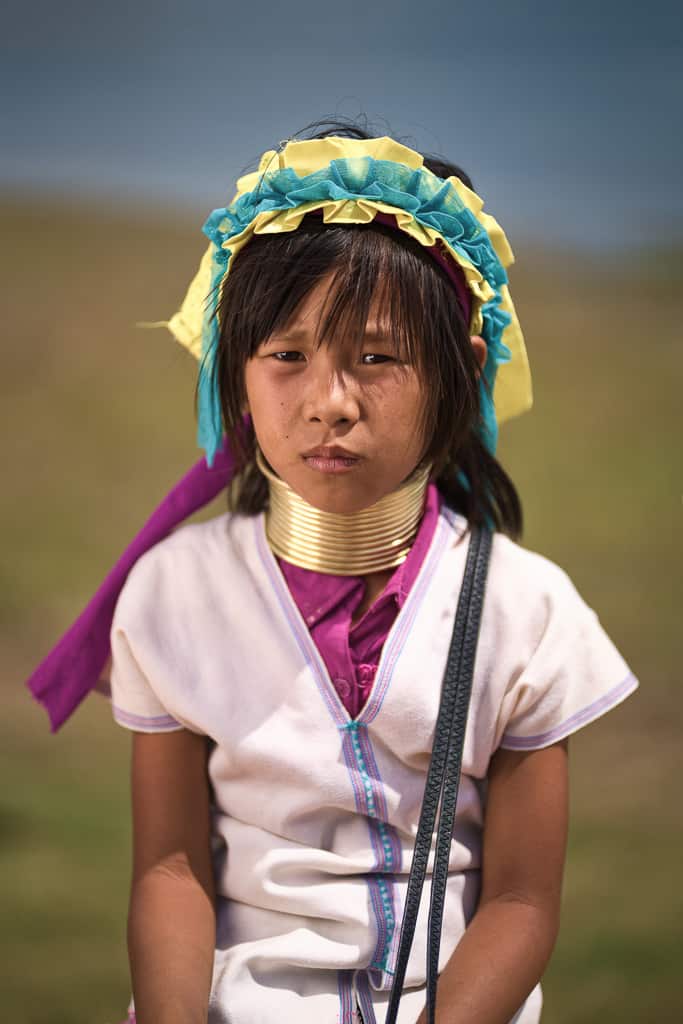
If you don’t have a guide to go into the mountains to photograph the Karen Longneck tribe, it’s best to inquire at your hotel. It’s important to get an experienced guide as there are still cowboys posing as guides who’ll drive you around with various substances in their blood and try to get as much money out of you as possible.
Having said that, most guides for photography tours, even for the Karen Longneck villages will be from out of state. They’ll drive up from elsewhere and meet you at the airport or your hotel. Even those guides can be disappointing. The people working in tourism in Myanmar are in my experience used to making money quite easily so you’ll most likely won’t have the level of professionalism that you get elsewhere in South East Asia.
Who are the Karen Longneck or Kayan Lahwi people?
Most Kayah villages have an animist tradition pre-dating Buddhism or Christianity. The Kayan long neck women wear the rings from when they are children, starting with four or five and adding more every year as they acclimate to the increased weight. These coils weigh up to 26 pounds and press on the chest and shoulders. Similar to the binding of feet in China, this restricts and distorts normal skeleton growth, making the neck appear longer.
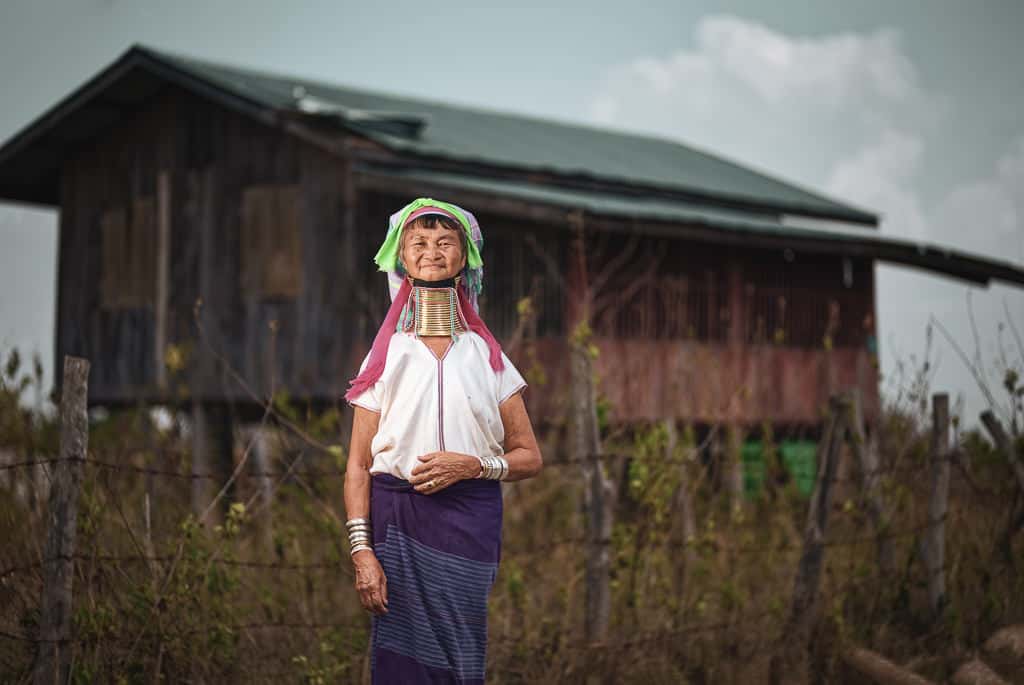
28 is the maximum number of rings their necks can hold, and there is a lock on the back they can release when they sleep so that their necks have a bit of breathing room. The rings do not ever come off entirely.
It’s unclear how the culture of elongating the neck with these copper rings started. Most stories range from making their women unattractive to other tribes to more sinister stories like protecting the neck from tiger bites. At one point, this practice was outlawed by the Burmese Junta and due to globalization, the practice is now dying out in the traditional sense. More disconcerting is the fact that youing girls are now forced by their elders to start wearing neck rings for tourists.
Panpet Village and surrounding villages
Your guide will most likely start your Karen Longneck photography tour at Panpet Village. This is the easiest way if you’re there for quickly photographing the Karen Longneck people. It’s about an hour’s drive from Loikaw and there is a touristy stop called Kyut cave along the way.
The tribe members of Panpet are often called Padaung as are most of what we call the Karen Longneck people. The people themselves aren’t fond of that name and call themselves Kuyun.
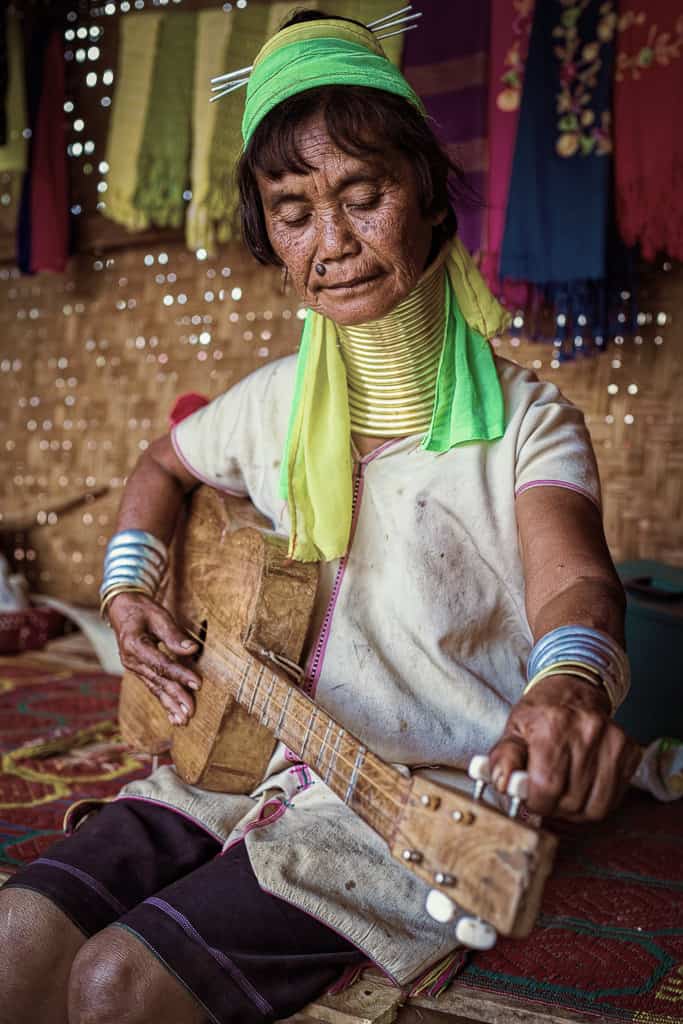
Now, things are changing rapidly here, and while this once was a quiet farmer’s village, it has now become a tourist market with stalls where you can buy all kinds of souvenirs (from china) supposedly made there. If you’re looking for authentic village life, you won’t find it here, but the women here are the real deal of course.
Some of these women are also musically gifted and they’ll be happy to sing you some Kuyan songs backed with only an acoustic guitar.
The women are happy for their photo to be taken, but too often visitors get in their faces and crowd them, without even an introduction. So please show some respect.
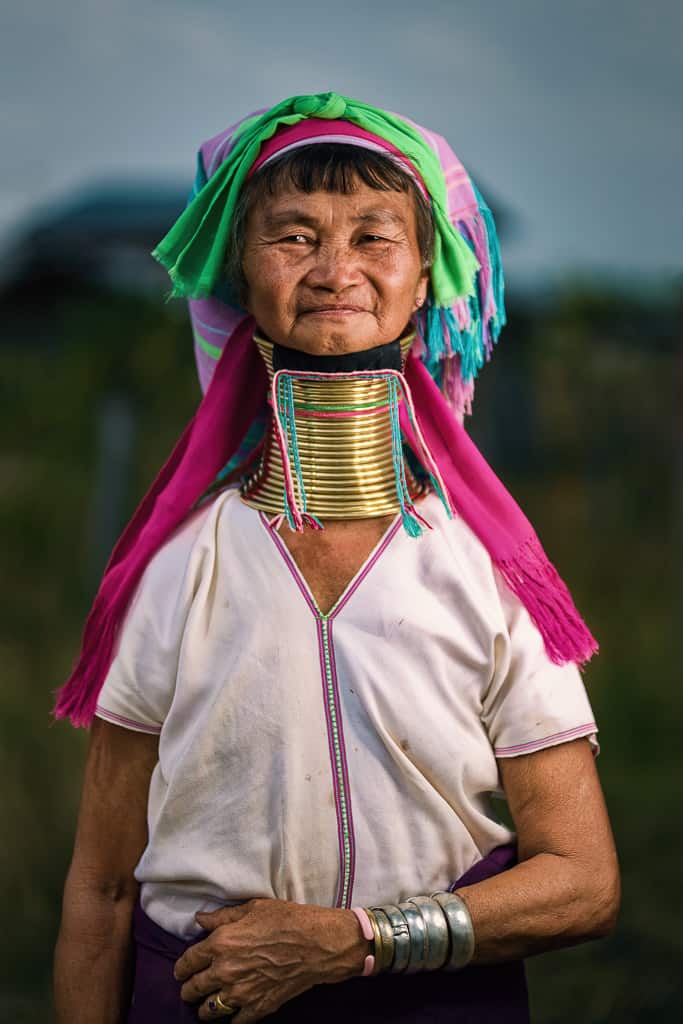
Other Kayah villages like Dawdama Gyi and Dawsaw Pyar
A further 2,5 hours drive you’ll find smaller and more authentic villages like Dawdama Gyi and Dawsaw Pyar. Even though these villages only opened to visitors in 2014, they are well used to seeing tourists now. If you want to photograph the Karen Longneck people, I would suggest stopping on your photography tour at many of the small villages along the way and checking if anyone is friendly enough to invite you inside their home.
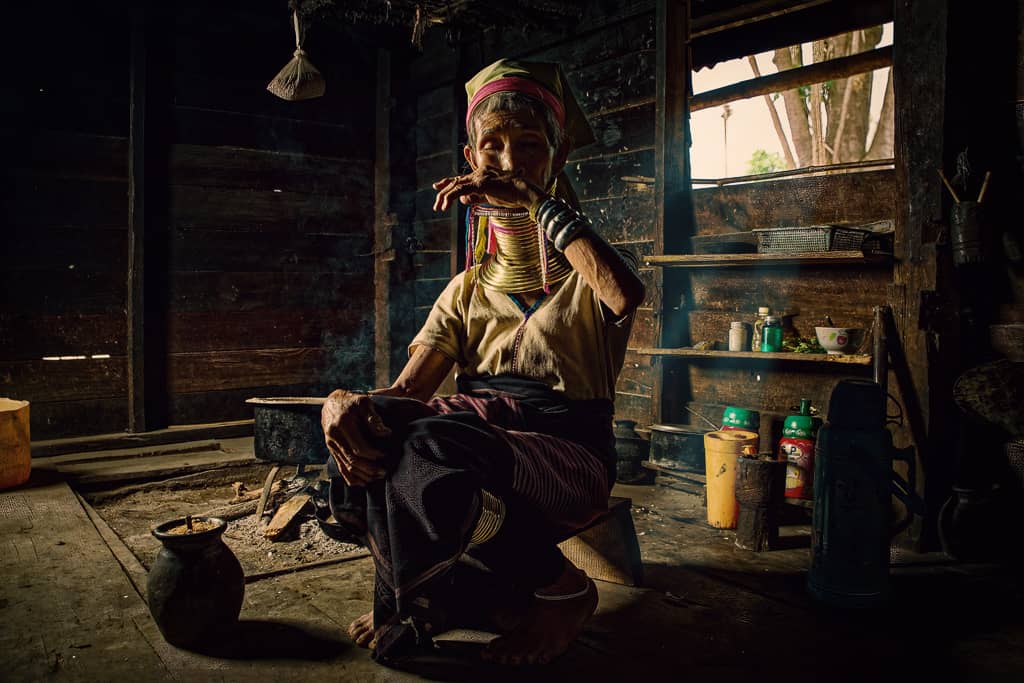
This way, you’ll be able to see how the Kayah people live and get some nice shots of that.
Note that some villages like Hta Nee La Lch and Pan Pet can only be visited with a permit, as part of an organized tour.
Conclusion
If you are interested in a tour for photographing the Karen Longneck people, you should go to Kayan State in Myanmar. You can also find some Karen Longneck villages, but the people there are mostly exploited and are not even eligible for Thai citizenship.
It’s easiest to get to the Kayan state capital Loikaw from Yangon by plane. This will set you back around $150 dollars for a return journey and get you there in only an hour. Hotels in Loikaw are decent and cheap, and it’s only a few hours’ drive to the Kayan hills where you’ll find the most authentic chance for photographing the Karen Longneck people.
Make sure you have a trustworthy driver and guide before embarking on this journey. Your first stop will probably be Pampet village where you can talk to some traditional Karen Longneck woman with the 28 rings, as well as buy a souvenir or listen to their traditional beautiful chants.
If however, you want a more authentic and traditional go at photographing the Karen Longneck people, you’ll need to drive a few more hours to smaller and more authentic villages like Dawdama Gyi and Dawsaw Pyar.
Always be kind, courteous and try to learn as much as you can of the traditions of the fascinating Kayah People.
